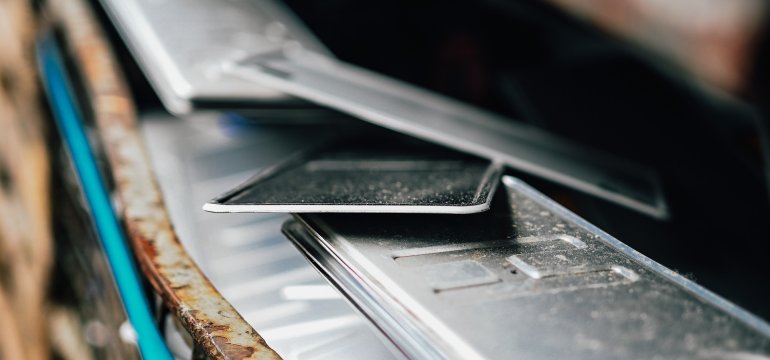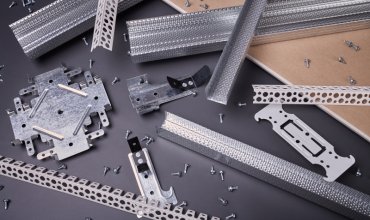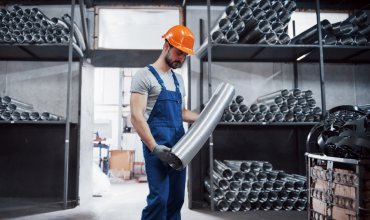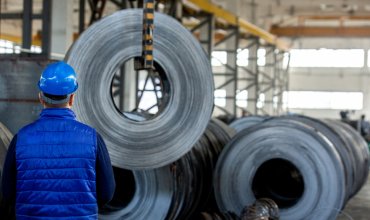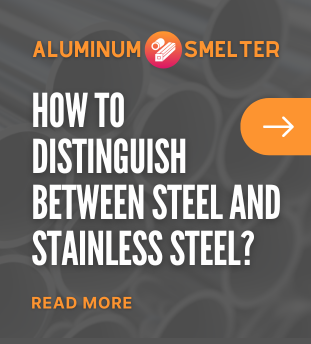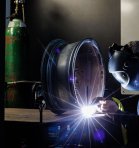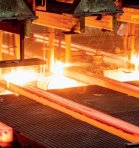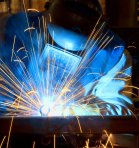Aluminum, known for its light weight and corrosion resistance, is a material widely used in many industries. Its unique properties make it used in the manufacture of aircraft, automobiles, electronics, as well as in construction. Nevertheless, aluminum is also subject to corrosion, which can lead to serious technical and financial problems. What does aluminum corrode from and what factors affect this process? How can we effectively prevent corrosion of this metal? In this article we will try to answer these questions, introducing the principles of protecting aluminum from corrosion and practical methods of preventing it.
What is corrosion of aluminum?
Corrosion is a natural process in which a metal degrades under the influence of the environment. In the case of aluminum, this process involves the formation of aluminum oxides on the surface of the metal. Corrosion of aluminum can take different forms, depending on the conditions the metal is subjected to. The most common types of corrosion are:
Galvanic corrosion: This occurs when aluminum is in contact with another metal in the presence of an electrolyte, such as water or moist air. In such a system, electrochemical reactions occur that lead to accelerated degradation of the aluminum.
Pitting corrosion: This is a localized form of corrosion that forms small but deep pits on the surface of the metal. It is particularly dangerous because it can quickly weaken the structure of aluminum.
Intergranular corrosion: Applies to the grain boundaries of metal and can lead to structural weakening of the metal at the microstructural level.
What does aluminum corrode from?
The effect of the environment on aluminum corrosion
One of the key factors affecting what aluminum corrodes from is the environment in which it is located. Atmospheric conditions alone can significantly accelerate the corrosion process. For example, aluminum rusts faster in humid and salty environments, typical of coastal areas. This situation occurs because moisture and salts form a conductive electrolyte on the aluminum surface, which accelerates electrochemical processes.
It is worth noting that all these phenomena also occur in Poland. Although our country is not a tropical paradise full of moist forests, our Baltic coast, dominated by salty breezes, poses a significant corrosion risk for aluminum installations there.
Environmental pollutants
In addition to natural atmospheric factors, pollution is also of great importance. Acid rain, resulting from industrial emissions, can significantly accelerate the corrosion of aluminum. Pollutants such as sulfur dioxide or nitrogen oxides, when they react with water, form acids that, when in contact with the aluminum surface, cause the rapid formation of harmful chemicals.
In Poland, the problem of air pollution is serious, especially in industrialized regions such as Silesia. In such places, the risk of accelerated corrosion of metal structures, including aluminum, is much higher.
Mechanical stress
Industrial and transportation hustle and bustle leads to a situation where aluminum is exposed to various types of mechanical stress. This triggers microcracks and further contributes to accelerated corrosion. Mechanical stress can result from pressures, impacts, vibrations or other forces acting on the metal.
For example, in aviation, where aluminum is the primary structural material, the requirements for strength and durability are extremely high. Micro-cracks caused by takeoff and landing cycles can lead to serious failures, which is why it is so important to monitor the condition of these materials and diagnose potential damage on an ongoing basis.
Techniques for preventing aluminum corrosion
Protective coatings
One of the most effective ways to protect aluminum from corrosion is through protective coatings. These coatings can be organic, such as paints and varnishes, or inorganic, such as anodizing.
Paintsand varnishes: The use of anti-corrosion paints effectively insulates aluminum from the elements, protecting it from moisture and other aggressive substances.
Anodizing: The anodizing process creates a hard, protective oxide coating on the surface of aluminum, which makes the metal more resistant to corrosion. An additional advantage of anodizing is that it improves the aesthetics of the aluminum surface.
In Poland, these techniques are widely used in various industries. One example is the automotive industry, where aluminum is often anodized to ensure the durability and attractive appearance of automotive parts.
Cathodic protection
Cathodic protection is a technique for preventing the corrosion of a metal by controlling its electrochemical potential. It is particularly effective for structures exposed to water, such as external piping or ship hulls.
The method involves attaching a so-called sacrificial anode, made of a metal more prone to corrosion than aluminum, to the protected structure. The sacrificial anode corrodes instead of aluminum, thus protecting the metal component.
Aluminum alloys
Adding other metals to aluminum creates alloys with higher corrosion resistance. For example, the addition of copper, zinc, magnesium or silicon can greatly improve the corrosion resistance of aluminum.
Al-Cu alloys: Aluminum with the addition of copper can have better corrosion properties, but at the cost of losing lightness and ease of machining.
Al-Mg alloys: Aluminum alloys with magnesium are more resistant to oxidation and have better mechanical properties.
This technique is widely used in the aerospace, marine and electronics industries, where requirements for strength and corrosion resistance are particularly high.
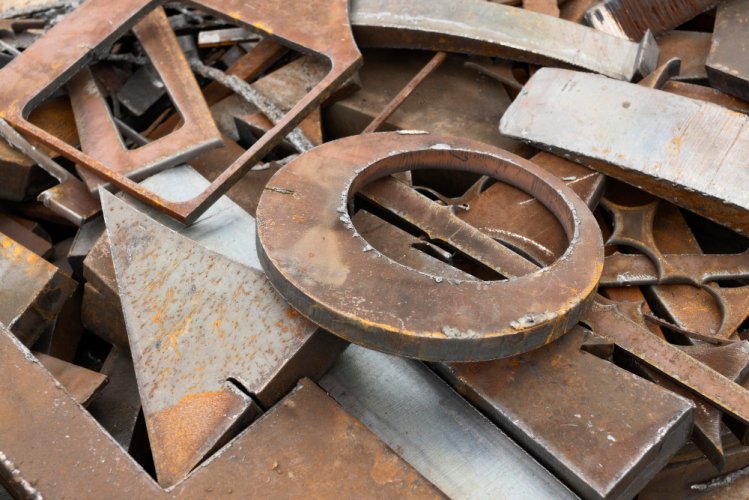
Regular maintenance and condition monitoring
Regular inspection and maintenance is one of the most important elements in protecting aluminum from corrosion. Inspections should include condition monitoring, measurement of the thickness of the protective coating and early detection of signs of corrosion.
Maintenance involves removing dirt, salt and other contaminants that can accelerate the corrosion process. If necessary, it may also be necessary to renew protective coatings or repair damage.
In Poland, services responsible for critical infrastructures regularly monitor the technical condition of bridges, pipelines and other installations made of aluminum. Such measures prevent serious failures and extend the life of the structures.
Examples of aluminum applications in Poland and related challenges
Automotive industry
Aluminum is widely used in the Polish automotive industry. Body parts, rims, engine blocks and other components are made from aluminum for its lightness and strength. However, contact with road salt during winter and exposure to moisture make corrosion a serious challenge.
For this reason, automakers place great importance on protecting aluminum components with protective coatings and anti-corrosive paints. Regular washing of cars during the winter, especially the undersides, can also significantly reduce the risk of corrosion.
Aviation
Poland has a long tradition in the production of aircraft and aviation components. Aluminum is the foundation of aircraft structures because of its strength-to-weight ratio. In aviation, corrosion can have catastrophic consequences, so special attention is paid to protecting aluminum surfaces.
Anodizing, as mentioned earlier, is commonly used here, but other techniques such as cathodic protection and the use of aluminum alloys are also extremely important. Regular aerial inspections, known as C-check, include detailed inspections of aluminum components to detect and repair any signs of corrosion.
Construction
In the construction industry, aluminum is used for windows, doors, facades and other architectural elements. Its light weight and corrosion resistance make it a popular choice in modern structures. A particular challenge for buildings located in cities with high levels of pollution, such as Warsaw and Krakow, is to protect aluminum from aggressive urban conditions.
In such cases, advanced protective coatings and regular structural maintenance are used to ensure long-term protection. Sports stadiums, shopping malls, and modern office buildings are examples of places where aluminum structures require careful protection from corrosion.
Infrastructure
Aluminum is also used in infrastructure, including bridges, pipelines and installations in coastal areas. In these applications, it is particularly important to provide durable corrosion protection. The use of protective coatings, condition monitoring and cathodic protection techniques are key activities that protect aluminum structures from degradation.
Summary
Aluminum, despite its well-known resistance to corrosion, is not completely free of this problem. What does aluminum corrode from and what are effective methods of prevention? As presented in the article, aluminum corrosion is the result of environmental factors, pollution, mechanical stress and maintenance errors.
The use of protective coatings, cathodic protection techniques, the use of aluminum alloys and regular maintenance are the most effective methods of preventing corrosion. In Poland, where corrosion challenges are significant, especially in industrialized and coastal regions, these techniques are widely used to protect valuable aluminum structures.
Condition monitoring and ongoing damage diagnosis are indispensable components of an aluminum protection strategy. In practice, all of these measures lead to an extension of the life of structures and ensure the safety and durability of aluminum installations in various industries.
It also saves considerable financial resources that would have to be spent on repairing and replacing damaged components. Therefore, understanding what aluminum corrodes from and how to effectively counteract it is crucial for engineers, designers and anyone who deals with this unique metal.


